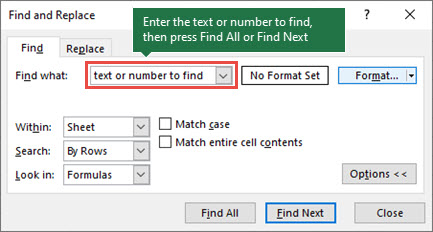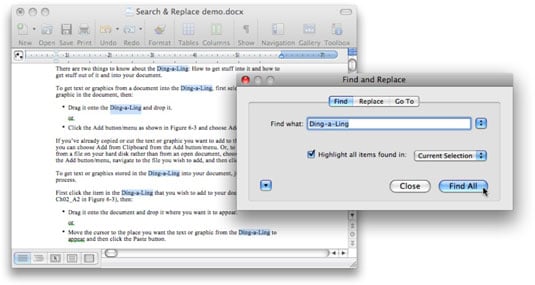
Where this comes in handy, though, is with searching for any of a number of characters. For example, searching for “” would find any occurrence of the letter “a.” You can use the square brackets to specify any character or range of characters. For example, searching for “
While the asterisk stands in for any number of characters, the question mark wildcard works much the same way but stands in for only a single character. Use a Question Mark to Find A Specific Number of Characters One thing to keep in mind is that searching is case sensitive when you have wildcards turned on. Keep clicking “Find Next” to find each part of the text that matches your search term. Word evaluates the search and shows you the first occurrence it finds in the document. Next, click “Special” to view the wildcard list. The “Match Case,” “Find Whole Words Only,” “Match Prefix,” and “Match Suffix” checkboxes are unavailable. Also, when the “Use wildcards” check box is selected, Word finds only the exact text that you specify. Notice that when you enable the “Use Wildcards” option, Word shows that the option is enabled right under the “Find what” edit box.

With the window expanded to show search options, enable the “Use Wildcards” checkbox. If you see a “Less” button instead, you’re ready to roll. In the Find and Replace window, click “More” to expand the dialog box and view additional options. Switch over to the “Home” tab on Word’s Ribbon, and then click the “Replace” button.
#HOW TO USE ADVANCED FIND AND REPLACE ON MAC 2016 HOW TO#
How to Use Wildcards for Advanced Searching By using wildcards, you can search for just about everything in your document. If you have styles that are more difficult to replace with simple keyboard shortcuts, you can click the “More” button on the lower left-hand side to show a lot more options.Word has a powerful search feature that lets you search for text, numbers, formats, paragraphs, page breaks, wildcards, field codes, and more. You can even use multiple search criteria here. For instance, if you wanted to replace all bolded text with regular text, you’d use Ctrl+B in the “Find what” box, or for italics you would use Ctrl+I.
Open up the Find and Replace dialog from the menus, or just use the Ctrl+H keyboard shortcut.Ĭlick in the blank Find box, and then you can use the regular keyboard shortcuts to specify specific formatting. Or you could remove that ugly Heading 2 style they used… what were they thinking using bright red? You can easily search and replace all bolded or italicized text in a document, for instance. What you might not realize is that the search and replace functionality in Word allows you to replace more than just text.

If you’ve ever worked on a document originally created by somebody else, you’ll most likely immediately be frustrated by their horrible choice of fonts and formatting.


 0 kommentar(er)
0 kommentar(er)
